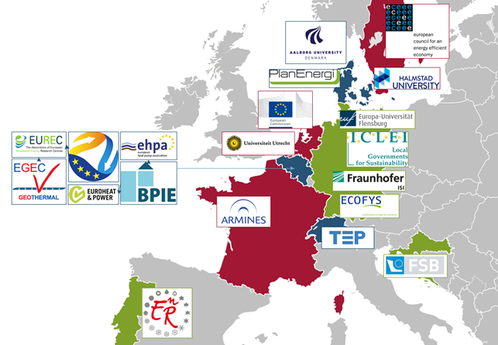Heat Roadmap Europe – A low-carbon heating and cooling strategy for Europe (HRE4)
Heat Roadmap Europe 4 (HRE4) will create more certainty in relation to the long-term changes that are necessary to decarbonise the European heating and cooling sector. Through this HRE4 will enable new policies and prepare the ground for new investments.
The combination of local demand and resource mapping and integrated energy system analysis shows both the local nature of heating and cooling, but also the impact that heating and cooling has on our national energy systems. This allows us to develop and assess scenarios that are inherently local, and on a national and European scale.
HRE studies the heating and cooling sector in Europe, and quantifies the effects of increased energy efficiency on both the demand and supply side in terms of energy consumption, environmental impact, and costs. By looking at the 14 largest consumers of heating and cooling in Europe, we will develop country-specific Roadmaps, but will also be able to discuss the future of 90% of European heating and cooling demands.
So far, Heat Roadmap Europe studies have concluded that energy efficiency in the heating sector, which primarily includes heat savings in buildings, district heating in urban areas, and heat pumps and solar thermal in rural areas, will result in a cheaper, more local, and far more renewable heating and cooling sector in the future.
